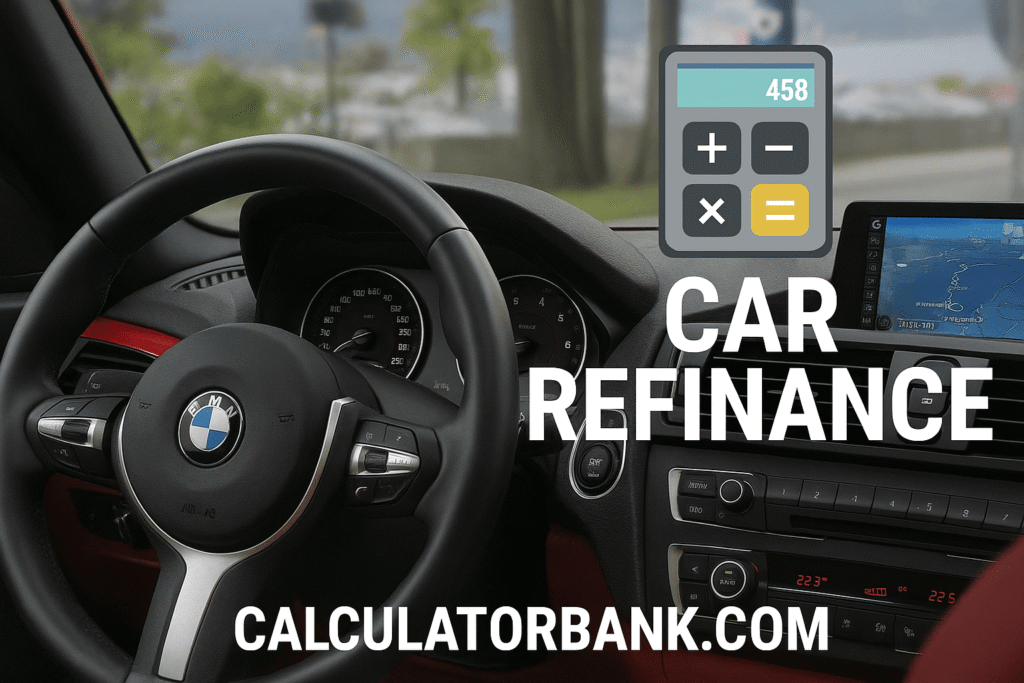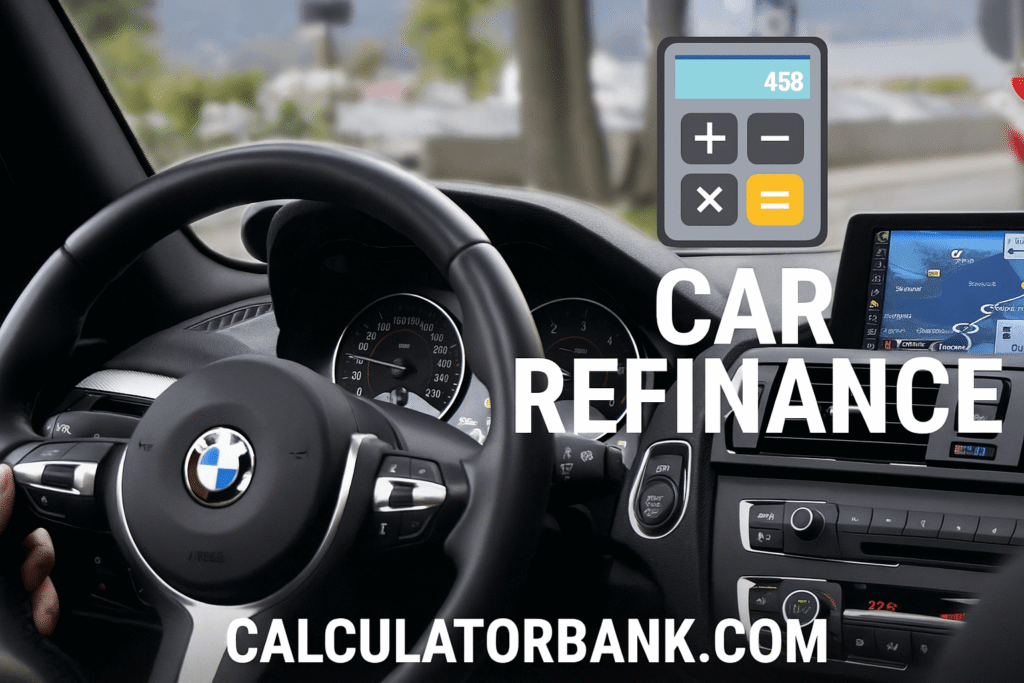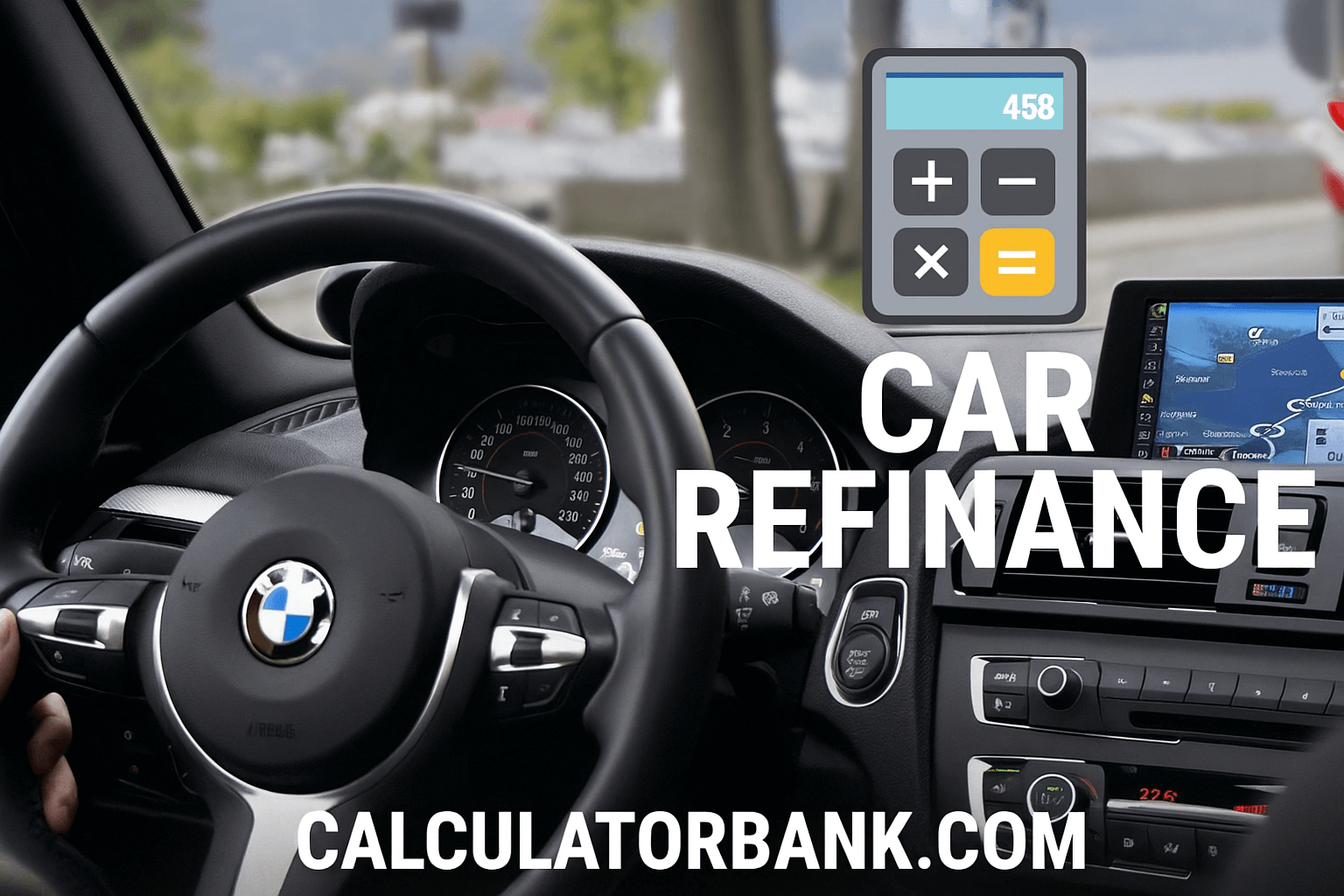Car Refinance: You check your bank account after your monthly car payment clears, and it stings. That number feels too high for what you’re getting.
Maybe your budget has gotten tighter, or you’ve heard friends talk about refinancing their vehicles. You wonder if you’re stuck with this payment for the next few years or if there’s a way out.
Good news: you’re not locked in. Car refinancing gives you a chance to press reset on your auto loan, and for many drivers, it can mean real savings each month.
But it’s not a magic solution for everyone. Understanding how refinancing works and when it actually makes sense will help you decide if it’s the right move for your wallet.
What Is Car Refinance?
Car refinance means taking out a new loan to pay off your existing auto loan. Think of it as a loan swap. Your new lender pays off what you owe to your current lender, and you start making payments under the new loan terms.
The goal is usually to get better terms than what you have now, a lower interest rate, smaller monthly payment, or both.
The process is similar to when you first financed your car, but you already own the vehicle. You’ll apply with a lender, get approved based on your credit and income, and the new loan replaces your old one. Most people refinance to save money, but you might also do it to change your loan length or switch to a lender with better customer service.

How Car Refinance Actually Works
Getting started with refinancing is less complicated than most people think. The whole process can take just a few days once you know what you’re doing.
First, you’ll want to know exactly where you stand with your current loan, how much you owe, what interest rate you’re paying, and whether there are any penalties for paying it off early.
Next, you’ll shop around for new loan offers. Banks, credit unions, and online lenders all offer refinancing. You’ll give them information about your car, current loan, income, and credit score. Many lenders let you see potential rates without affecting your credit score through a process called prequalification.
Once you pick a lender and formally apply, they’ll do a hard credit check and verify your information. If approved, the new lender contacts your old lender to pay off your loan.
You might need to handle some paperwork about the car’s title, but your new lender usually helps with this. After everything goes through, you start making payments to your new lender under the new terms.

When Car Refinance Makes Sense
1) Your Credit Score Has Improved
Maybe you financed your car a couple years ago when your credit wasn’t great. Since then, you’ve paid bills on time, reduced credit card balances, and your score has climbed. A better credit score is one of the strongest reasons to refinance because lenders reward higher scores with lower interest rates.
The difference can be substantial. Someone with a credit score in the 500s might pay 15% or higher on an auto loan, while someone with a score above 700 could get rates around 6% or 7%. If your score has jumped even 50 to 100 points, you could qualify for significantly better terms and save hundreds or thousands over the life of the loan.
2) Interest Rates Have Dropped
Interest rates move up and down based on economic conditions. If you bought your car when rates were high and they’ve since come down, refinancing could save you serious money. Even a drop of 2 to 3 percentage points can make a real difference in what you pay each month and overall.
For example, if you have $10,000 left on your loan with four years remaining at 15% interest, you’re paying around $278 per month. Refinance to 7% interest, and your payment drops to about $239, saving you nearly $40 monthly and over $1,800 in total interest over those four years.
3) You Got Dealer Financing
Buying a car at the dealership is exciting, but dealer financing isn’t always the best deal. Dealers often mark up interest rates to make a profit on the loan. If you financed through the dealer without shopping around first, there’s a good chance you’re paying more than you need to.
Refinancing with a bank or credit union often gets you a more competitive rate. This is especially true if you had limited time to research options when you bought the car or felt pressured to accept the dealer’s offer to close the deal quickly.
4) Your Monthly Payment Is Too High
Life changes. Maybe you took a pay cut, had a baby, or your other expenses went up. If your car payment is stretching your budget too thin, refinancing might help by extending your loan term. A longer loan means smaller monthly payments, which can give your budget some breathing room.
Just be aware that extending your loan term usually means paying more interest overall, even if your rate stays the same. You’re borrowing the money for longer, so the lender collects more interest. Still, if you’re struggling to make payments now, the short-term relief can be worth it.
5) You Have Positive Equity
Positive equity means your car is worth more than what you owe on it. Lenders love this because it reduces their risk. If you default, they can sell the car and recover their money. Having positive equity can help you get approved for refinancing and might qualify you for better rates.
You can check your car’s value on sites like Kelley Blue Book or Edmunds. Compare that number to your remaining loan balance. If your car is worth $18,000 and you owe $12,000, you have $6,000 in equity. That’s a strong position for refinancing.

When You Should Wait on Your Car Refinance
You’re Nearly Done Paying Off Your Loan
If you only have a year or less left on your current loan, refinancing probably isn’t worth it. Most lenders require minimum loan terms of at least 24 months, so you’d be extending your loan and likely paying more in interest than you’d save. At this point, it makes more sense to finish what you started.
The same goes if your remaining balance is low. Many lenders won’t refinance loans under $5,000 or $7,500 because they can’t make enough money on such small loans. You might not even qualify if your balance is too low.
Your Loan Is Brand New
Most lenders want to see that you’ve had your current loan for at least six months before they’ll refinance it. This shows you can handle the payments responsibly. If you just bought your car a few months ago, you’ll likely need to wait before refinancing becomes an option.
Also, refinancing too quickly means you haven’t built much payment history or equity in the vehicle. Your car has depreciated since you bought it, but you haven’t paid down much of the principal yet. Lenders see this as risky.
You Owe More Than the Car’s Worth
This situation is called being upside down or underwater on your loan. It happens when you owe more money than the car is currently worth. Cars lose value over time, especially in the first few years. If you bought with a small down payment or rolled negative equity from a previous car into your loan, you might be in this spot.
Lenders don’t like refinancing upside-down loans because if you default, they can’t sell the car for enough to cover what you owe. You might still find a lender willing to work with you, but the terms probably won’t be good enough to make refinancing worthwhile.
Interest Rates Have Gone Up
If you got your loan when rates were low and they’ve since climbed, refinancing will likely cost you more, not less. There’s no point in swapping a 4% loan for an 8% loan unless you absolutely need to extend your term to lower your monthly payment because of financial hardship.
Keep an eye on rate trends. If rates are high now but expected to drop, it might be worth waiting a bit before refinancing to get better terms.
Fees Would Cancel Your Savings
Some auto loans have prepayment penalties, fees you pay for paying off the loan early. If your current loan has one of these penalties, calculate whether the money you’d save through refinancing is more than the penalty amount. Sometimes the penalty wipes out any benefit.
New lenders might also charge application fees, origination fees, or other costs. Your state might require you to pay title transfer fees or registration fees. Add up all these costs and subtract them from your estimated savings. If you’re only breaking even or saving a tiny amount, refinancing isn’t worth the hassle.

The Step-by-Step Refinancing Process
Check Your Current Loan Details
Before you do anything else, pull out your current loan paperwork or log into your lender’s website. Write down your interest rate, monthly payment, remaining balance, and how many months you have left. Check if there’s a prepayment penalty. You need this information to compare new offers and know if refinancing will actually save you money.
Know Your Credit Score
Your credit score determines what interest rates you’ll qualify for. Check your score for free through your bank, credit card company, or websites like Credit Karma. If your score is lower than you’d like, consider waiting and working on improving it before you apply. Even a small increase in your score can mean better rates.
Gather Your Documents
Lenders will ask for proof of income (like recent pay stubs), your driver’s license, your Social Security number, and information about your car (the VIN, mileage, and make and model). Having these ready speeds up the application process. You’ll also need your current loan information to share with potential new lenders.
Shop Around for Rates
Don’t settle for the first offer you see. Check rates from at least three different lenders—your current bank, a credit union, and an online lender. Many let you prequalify, which means you can see estimated rates without hurting your credit score. This lets you compare options without commitment.
Apply and Close the Loan
Once you pick a lender with good terms, you’ll complete the full application. This triggers a hard credit inquiry, which can temporarily lower your score by a few points. If approved, review all the terms carefully before signing.
Make sure the interest rate, monthly payment, and loan length match what you were promised. After you sign, the new lender pays off your old loan, and you start making payments under the new terms.
Questions About Car Refinance
How Soon Can You Refinance?
Most lenders require you to wait at least six months after taking out your original loan. This gives you time to establish a payment history and build some equity. Some lenders might let you refinance sooner, but waiting is usually better because your credit score, car value, and financial situation are more stable.
Can You Refinance Multiple Times?
Yes, you can refinance your car more than once. If rates drop again or your credit improves further, you can refinance a second or third time. Just make sure the savings are worth it each time, and watch out for fees that could eat into your benefits.
Does Refinancing Hurt Your Credit?
Refinancing causes a small, temporary dip in your credit score because of the hard credit inquiry. The inquiry stays on your report for two years but usually only affects your score for a few months. If you make payments on time with your new loan, your score will recover and likely improve over time.
What If You Have Bad Credit?
Refinancing with bad credit is harder but not impossible. You might not get the best rates, but you could still save money by extending your loan term to lower your monthly payment. Focus on improving your credit first if possible—pay bills on time, reduce debt, and dispute any errors on your credit report. Even modest improvements can help you get better refinancing terms.
Alternatives to Refinancing
If refinancing doesn’t work for your situation, you have other options. You could contact your current lender and ask about a loan modification, especially if you’re having trouble making payments. Some lenders will work with you to extend the term or temporarily reduce payments.
Another option is trading in your car for something cheaper. If your payment is too high because you bought more car than you can afford, downsizing to a less expensive vehicle can solve the problem. You might also consider selling your car privately and using the money to buy a cheaper used car with cash or a smaller loan.
How To Make the Smart Choice
Car refinancing can be a powerful way to save money and make your budget work better. The key is understanding your situation and running the numbers before you commit. Calculate how much you’ll actually save after accounting for all fees and costs. Consider both your monthly payment and the total amount you’ll pay over the life of the loan.
If refinancing saves you money without extending your debt for too long, and you meet the lender’s requirements, it’s probably a smart move. But if you’re close to paying off your loan, stuck upside down, or facing high interest rates across the market, waiting might be the better choice. Take your time, compare offers, and make the decision that puts you in the strongest financial position for the long run.
Your car payment doesn’t have to be set in stone. With some research and smart timing, refinancing could put extra money back in your pocket every month, money you can use for savings, paying down other debt, or just making life a little less stressful. The power to change your loan terms is in your hands.


